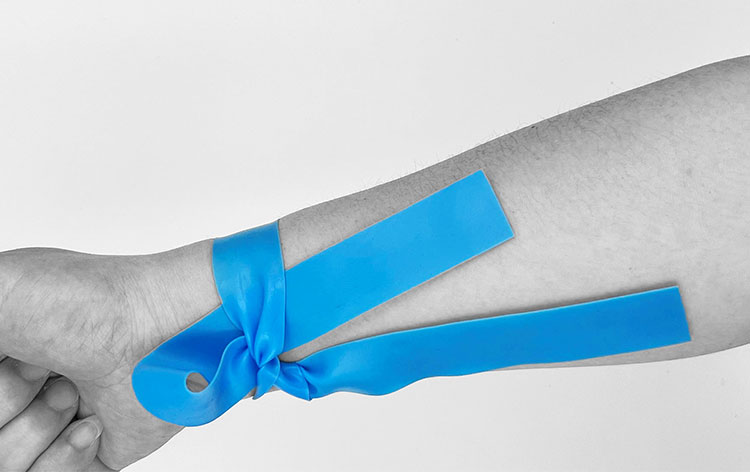Back
Share
Design and Development of a Tourniquet Bandage using Thermoplastic Elastomers (TPE)
Tourniquets are a crucial medical device used in various procedures, such as administering conventional therapy, drawing blood, transfusing blood, and providing medication during hemostasis. These devices work by compressing the vasculature and blocking the blood flow to achieve hemostasis. Traditional tourniquets are made from resilient materials such as natural rubber or specific rubber that have been refined into a usable form. However, with the advent of thermoplastic elastomers (TPE), a material that exhibits both rubber and thermoplastic properties, TPE has emerged as a preferred material for manufacturing tourniquets. TPE can undergo elastic deformation like rubber at normal temperatures and plastic deformation like plastics at high temperatures. Moreover, TPE is easy to process through injection, extrusion, and casting procedures, and is convenient to carry due to its lightweight nature. Additionally, TPE possesses good health characteristics, making it a highly desirable material for tourniquets and other medical devices.
To improve the antimicrobial properties of thermoplastic elastomers (TPE), it is crucial to ensure that tourniquets manufactured from this material possess robust antibacterial capabilities. Although some existing TPE-based tourniquets meet the demand for antimicrobial properties, they frequently exhibit low mechanical strength and resilience, making it challenging to achieve optimal vascular compression. Furthermore, traditional natural rubber materials have drawbacks such as complex processing procedures and difficulties with recycling. Therefore, it is imperative to develop medical grade TPE-based tourniquets that exhibit both antimicrobial properties and high mechanical strength and resilience while being easily recyclable. Such advancements are essential to guarantee the safety and efficacy of these medical devices in clinical settings.


Everlon Recommendation for Tourniquets Made of TPE: TM-45NC
Everlon medical grade TPE: TM-45NC are designed to manufacture TPE torniquet providing high-quality and safe medical treatment procedures. Made from thermoplastic elastomers, these tourniquets are free of latex allergens, making them suitable for use on patients with latex sensitivities or allergies.
The tourniquets are made from a soft and elastic TPE material with a hardness of 45A. This particular type of TPE is transparent and suitable for use in tourniquet bandages. The absence of latex means that these tourniquets will not cause allergic issues to the human skin, providing added safety for patients during medical procedures.
Moreover, TPE tourniquets have been rigorously tested to ensure their reliability and effectiveness in achieving vascular compression. They possess excellent mechanical strength and resilience, making them easy to use and highly effective in hemostasis procedures. Additionally, these tourniquets are lightweight and easy to carry, making them convenient for medical practitioners to use in a range of clinical settings.
Overall, TPE tourniquets are an ideal choice for medical institutions seeking high-quality, safe, and reliable tourniquets for use in their medical procedures.
Features and benefits
-
Latex allergen-free material
-
High opacity and translucency for easy visualization
-
Elastic and soft texture
-
Suitable for extrusion casting processing
-
Easily customizable with a variety of colors
-
Excellent rebound behavior
-
High-quality and reliable performance
-
Minimal odor and dust-free surface
-
Complies with toxicology requirements for safe use
-
Less abrasive to the skin for patient comfort
-
Provides excellent stretch recovery
-
Consistent elongation for optimum compression
-
Recyclable material for environmental sustainability
-
Compliant with USP Class VI regulations for medical use





